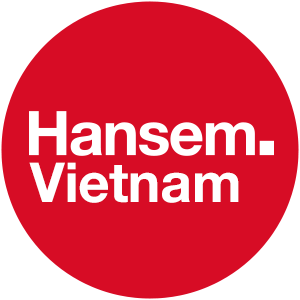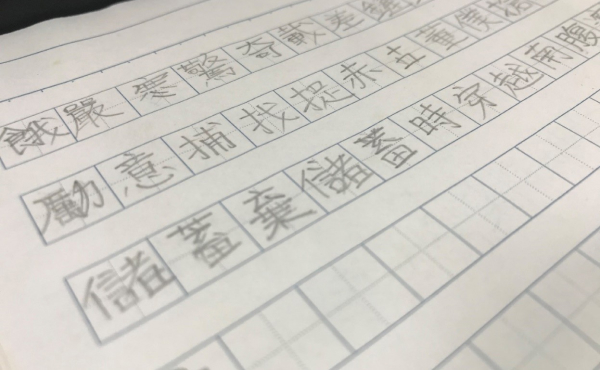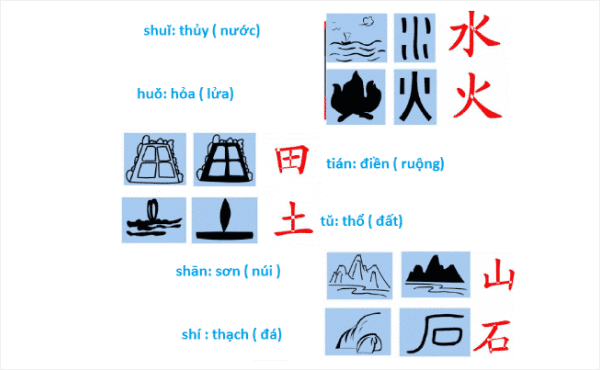list
Scripted by
Tram Nguyen


There are over 80,000 characters (called “Hanzi” – 漢子) in Chinese. Sounds like a massive number, right? Don’t fret, only about 7000 are in daily use and you only need a lexicon of around 3000 characters to read the newspaper. You may be asking: “Really, only 3000?” Considering that characters use recycled components, understanding the attributes of the 214 radicals (think of these guys as the “alphabet” for the Chinese language) is the key to bulk undertaking. Many Chinese characters combine two or more components with one representing the phonetic part and the other the semantic. Allow me to break this concept down with a few examples.

he semantic component provides the general category or clue of the meaning, while the phonetic part suggests the sound. Take 化 (pronounced as [huà] – meaning to transform or to change) and the component 艹 (indicative of grass or similar, strongly resembling something sprouting from the ground in its picture form). Together, they make the character 花 (pronounced [huā]; – meaning “flower”). See the association in the general 艹 category? This type of combination is called a phono-semantic compound. If a part of this character is modified, the meaning will change. Replacing 艹 with 貝 will yield 貨 (pronounced as [huò] – meaning merchandise, commodity, and similar). Notice that the pronunciation changed slightly from [huà] but kept an integral resemblance (this part takes familiarity and memorization, but you get the idea, right?). The 貝 component symbolizes a shellfish shell, which was a type of currency commonly used in Ancient China. This radical is used to denote anything to do with goods. In less than the time it takes to brush your teeth, you gained a deconstruction mindset to approach the Chinese language with the confidence that comes from having the ‘source code’.
Studying Hanzi is more than learning characters by heart; it entails philosophical and moral lessons exclusive to this language system.
The character 愛 (pronounced as [ài] – meaning “love”). This character is a bit of an ambitious undertaking but let’s take a crack at it. The four parts (from top to bottom) comprise 爪 – a claw, to grab the chance when one meets the love of his/her life; 冖 – to cover or to hide (resembles the shape of a pillow); one cherishes that love and protects it much in the way some people place their prized possessions under their pillow; 心 – the heart, representing taking the object of affection into the heart; and 夂 – to come in the end, after all of his/her attempts, true love will come. The character can also be seen as a combination of 受 at the top and 心 at the bottom, in which 受 means to sacrifice, tolerate, and accept into the in-most parts of the heart 心. Either way you put it together, this ideographic compound assembles various attributes into story-like form, yielding a visual representation of perhaps one of the most magical ideas in human expression.
Depending on life experience and imagination, Chinese characters can convey different stories to each individual, making the language interactive and often allowing the beholder to draw their own conclusions. Many characters have a whole story behind them, and if one does not exist or is unknown to the student, the learner can always make up crazy stories to help with memorization.
Another advantage of the “Hanzi” system is that the ‘words’ are not only able to deliver the same amount of information with much lower word count than languages using phonemic writing systems but also help avoid confusion caused by homophones. It takes a total of 11 letters to write “electricity” in English, a task that is accomplished with a single character (電) in 電 Chinese.
Furthermore, Chinese does not entail a complicated system of tenses, making deployment eco-friendly due to its space-saving characteristics, requiring less paper in print and much faster scanning of information at the fluency level.
In the 1950s, the State Council of the People’s Republic of China introduced Simplified Chinese – 簡體字 as a replacement to Traditional Chinese – 繁體字 in an attempt to reduce illiteracy. While simplified Chinese is incredibly helpful to learning the written language more quickly, the simplification somewhat compromises the philosophical attractiveness of the Hanzi system. The simplified version of 愛 is 爱: a shrinking combination of 爪 (the claw), 冖 (to hide) and 友 (friend), the heart 心 part is conspicuously missing, resigning the emotion to a friend-zone relationship. The entire imagery changes with the locking away and acceptance in the heart element completely missing.
Numerous countries in the immediate vicinity of China show a strong influence from Hanzi. Korea, Japan and Vietnam all share a significant part of their word-stocks from Hanzi roots. “Hanzi” or “Kanji” is still playing an essential role in the Japanese language, and Korean students are required to learn a specific number of “Hanja” to sit for certain examinations. In Singapore, with a majority of its population finding its heritage in Chinese ancestry, the local government adopted Simplified Chinese as one of its official languages. Another point to note: ancient documents in Korea, Japan, and Korea were all written in Hanzi.
Though Vietnamese abandoned Hanzi years ago, the country is still using the romanized form of Hanzi, known as “Hán Việt”, which contributes to more than 60% of the Vietnamese vocabulary.

(Source: chinese.com.vn)
Vietnamese people will use the “Hán Việt” vocabulary when they want to be more formal in speaking and writing. As a result, the language style of Vietnamese is closer to Chinese than that of Western languages, which leads to smoother conversion. For example: “Khả dụng” (Hanzi: 可用) is considered more proper usage than “có sẵn” when wanting to convey “availability”.
Even so, the writing system of Vietnamese is still a phonemic one which uses the Latin alphabet to record the sounds; therefore, homophone confusion cannot be prevented. The letter 風 (wind), 瘋 (mad) and 封 (to seal) have the same pronunciation [fēng] in Chinese and the same Hán Việt version “phong”. Adding to the confusion, “phong” is also used in some locales for the abbreviation of a kind of bacterial infection. Having a limited amount of knowledge about the Hanzi root could cause mistranslation during the Vietnamese localization process, “a mad person” might be understood as “a patient with a bacterial infection”. However, having a strong understanding of the Hanzi system and the pronunciation mapping, vocabulary sharing, and conceptual background makes translating and localizing more tranquil and natural than processing into other out-of-system language pairings.
Every language is beautiful in its own ways. Phonemic-based writing systems undeniably help make writing and reading faster, but Hanzi has its reason to perennialize for a thousand years. Hanzi is not only an art but also a kind of gravity that would attract anyone to the mysterious cultures of the East coast of the Eurasia continent.
Find out how the Asian-language linguistic experts at Hansem Global can help you ensure your messaging resonates with your target audiences free from costly missteps in the localization process. We know Asia, put us to work so you don’t have to live here for decades to unravel the layers of the onion!
Hansem Global is an ISO Certified and globally recognized language service provider. Since 1990, Hansem Global has been a leading language service company in Asia and helping the world’s top companies to excel in the global marketplace. Thanks to the local production centers in Asia along with a solid global language network, Hansem Global offers a full list of major languages in the world. Contact us for your language needs!